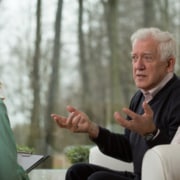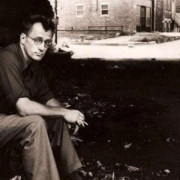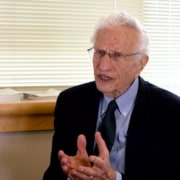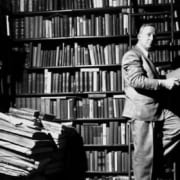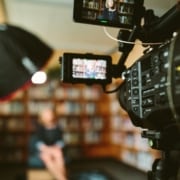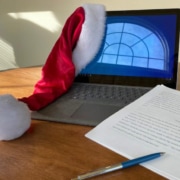Voices and Viewpoints Part II: Conducting an Oral History (and After)
The fact that it took an entire blog just to get to the point where we can talk about conducting the actual oral history interview shows how important preparation is. By the time the actual session starts, therefore, many of the toughest tasks are complete. Now the oral history consultant can enjoy talking to the interviewee—although there is still much to be done.
The Interview
There will always be pleasantries before the recording starts. Many interviewees express concern about how much they are likely to remember. I always take the opportunity to minimize expectations and assure them that this is “their interview” so they should feel free to talk about things that stand out most clearly in their memories. I assure them that those are likely to be the most important topics for discussion.
The first few minutes of every oral history interview session are important—you are getting to know the interviewee and he or she is getting to know you. Many interviewees are guarded at first. Some insist that they are future-oriented and do not live in the past. Some are worried that they will not know the answer to a question. Mostly they just wonder what exactly this person with the recorder wants.
That is why I usually begin the session with topics that are neither challenging nor threatening nor crucial to the interview. Starting from the beginning works perfectly—everyone has the elevator speech about when they grew up, where they went to school, and how they got started.
By the time I am heading into the most essential part of the interview I have usually established good rapport with the interviewee. But some important prerequisites have to be met. First, you must actively listen. Second, you must demonstrate familiarity with the interviewee’s life and work. The third prerequisite is one that amateurs often fail to fulfill: let the interviewee be the interviewee. Some people are great storytellers, but others are not. Get the stories when you can, but when you cannot, figure out what else is there. Some interviewees are highly analytical. Some are great with detail. Some are good amateur historians, able to put their life experiences into broader context. In any case, do not try to force an analyst to tell stories and do not try to make a tale spinner into an academic. Figure out how to play to your interviewee’s strengths as you lead them through their past.
That last point is important. People live their lives, and generally remember them, in sequence. That fact is the oral historian’s most valuable tool. Do not jump from time to time and subject to subject. When you help the interviewee work systematically through his or her life, the process brings depth to potentially pat answers and jars loose memories that people had not recalled in years. If interviewees want to jump around a bit, let them, but they usually appreciate sticking to the narrative and will return to it if gently reminded.
There are some tricks of the trade that I employ consistently during an interview—none are difficult to perform, but all pay big dividends. First, be quiet. Most people are uncomfortable facing another person in silence. But very often interviewees will stop in the middle of a story or recollection to think over what they want to say next. Amateur interviewers almost always cut them off. I give the interviewee time to remember.
Second, if one of the goals of oral history is to get recollections in context, how do you do that? I often employ the two-sentence format. The first sentence is a context-setting statement such as “This was a difficult period; the company was going through bankruptcy at the time.” Then comes the question: “So how were you able to keep the project going despite that?” In responding to this two-sentence format the interviewee will be encouraged to think about things in multiple dimensions and give a better response than he or she would in an answer to a simpler question.
It is easy for an oral historian to be preoccupied with what to ask next, but it always pays to pay close attention. Sometimes in a discussion the interviewee will let slip intriguing clues that there is something else back there, saying something in the middle of a story like “Bob, he was an unusual guy” and then continuing. If I have any suspicion that Bob might be important to my story, I come back soon for a simple clarification—”in what way was Bob unusual?” Even interviewers who do notice the aside may either forget to revisit the subject or opt not to get the clarification for fear of looking uninformed.
That gets to a last simple, but not always obvious, stratagem: ask obvious questions. Perhaps every magazine article you have read tells the same particular story in great detail and “everybody knows” a certain thing happened. If there is any chance the interviewee knows about it, ask anyway. There may have been something going on that was kept from the reporters or perhaps no one ever asked your source for the story before. By asking obvious questions you get two things: one, the certainty that you will have an original quote for your book, and two, the possibility that you’ll learn something new that you did not even know to ask about.
Keeping the Story Going (And on Track)
Most oral history interview sessions last 90 to 120 minutes. Busy people will have no more time to give you, and many retirees will visibly tire if they go on much longer. That means you have to have discipline. Many interviewees will go into the session expecting to talk about their lives in great detail, launching into childhood tales that stretch out and if that precedent is followed would put the approximate length of the interview somewhere around the 8 to 12-hour mark. The oral historian cannot let that happen. I am always ready to move things forward gently but firmly, even with an abrupt change of the subject if necessary. Less often an interviewee will want to jump straight into mid-career claiming that the rest “is not history.” I explain that it is and make sure to double back and get the required context.
Most of the interview, though, will be a matter of more careful calibration. The oral historian must be doing three things at once: talking notes (to show that he or she is interested and to jot down reminders), listening to the story being given, and figuring out approximately how much more time you can give to the current and future lines of inquiry. Some interviewees you will need to slow down, encouraging them to develop things in greater detail. Most you will need to speed up, getting them to work through things at a pace that ensures that you will finish under the two-hour mark.
There are times when you will want an exhaustive, if not encyclopedic, interview. In that case schedule several sessions, but even so the rules for each individual session will be the same.
In any event, always leave time for that last question: “is there anything else that we should talk about?” About a third of the time the answer is “that covers it.” Another third of the time the interviewee notes that he or she could go on for hours. But the rest of the time, the interviewee will indeed bring up a subject or line of questioning that we missed. Sometimes it is important, sometimes not, but providing that option is the last way to deliver on the promise that it was indeed “their” interview.
After the Interview
The next step is getting a transcript made. Your oral history consultant should be able to take care of this for you. There is one important qualification, however. Do not expect a verbatim record like the kind a court stenographer provides. This is a distinction that often surprises clients: an oral history transcript is not meant to capture the exact words spoken during the interview. Instead it is intended to provide the best historical record possible. Therefore, two things become possible. First, the transcript can be cleaned up so that it reads well. “Uhs,” “Ohs,” and other verbal tics can be removed. You can even sort out the syntax to some extent in order to make the interview transcript easier to read.
A corollary to this is that both interviewer and interviewee should be allowed to make corrections and even to add a minimal amount of new material in order to clarify or improve the record provided in the interview. This does introduce complications, however, that can add greatly to the duration and expense of the project. Some interviewees will be fine with the transcript the way it is. Some will make a handful of corrections. A few may try to rewrite the transcript entirely, sometimes just to make themselves sound more eloquent (it is surprising to see a transcript of your own speech) and sometimes to add additional paragraphs and pages on new subjects. I do my best to discourage this and enlist the client’s help in persuading interviewees to keep edits minimal whenever possible.
Finally there is the matter of the release form. Officially speaking, both the interviewer and the interviewee “own” the contents of an oral history interview. Both parties can usually assume that the interview may be used to write a book currently under way. But if there is any chance that the client may want to use the material later, I provide them with a release form that I will sign and that they can have the interviewees sign.
When best to pull out the release form is a matter for debate. There are some clients who will not arrange for an interview unless the form is signed in advance. Others prefer getting the form signed immediately after the session. Early in my career, when sessions were almost always audio and the final product was a transcript, interviewees often wished to be allowed to make and approve edits before signing. This being a reasonable request, it became my standard procedure for many years. In some cases this was particularly appropriate because of a curious phenomenon: as interviews go on, even people who are reticent at first tend to open up, and a few will begin dishing out specifics about people and personalities that they later regret but are easily removed from the transcript. As it is increasingly assumed that video will be the final product, however, interviewees now tend to go into sessions with a bit more circumspection.
How to Use Oral History
With the project complete, the question becomes, how to use it? There has been a great deal of discussion, mostly in academic circles, about how oral histories should be used. Some of it has to do with the privileging of certain voices over others, some stems from the perceived trustworthiness of a particular type of interviewee. In doing research in oral history collections kept in university archives I have even found notes attached to transcripts that said, in effect, “don’t trust this person—I don’t like what he said.” Those oral historians or archivists may have good intentions, but I believe that decisions about the validity of an interview should always be left to the historian using it. Documentary sources can have equally significant, if different, problems of accuracy and bias.
Finally there is the question of accessibility. The majority of my interviews have been conducted as part of a corporate history book project, with the client opting not to make them publicly available. They go onto a disk or into a box for future historians to use. Other interviews, including my ongoing work for the SEC Historical Society, go online shortly after conduct. In a few cases I have conducted interviews for clients who wanted to preserve the record for posterity but for the time being chose to keep them under lock and key. A current client intends to put a 20-year lock down on the interviews.
That is unfortunate for contemporary scholars and writers, but in the span of history that is covered in the average interview, twenty years is not that long a time. It is much better to do the interviews than not. And it is gratifying to know that when both I and the interviewee are gone, some future historian will delight to find an oral history interview that provides at least a few of the pieces of the historical puzzle that he or she will be working on.
If preserving your organization’s past for the future is a piece in your puzzle, give me a call to discuss an oral history project.
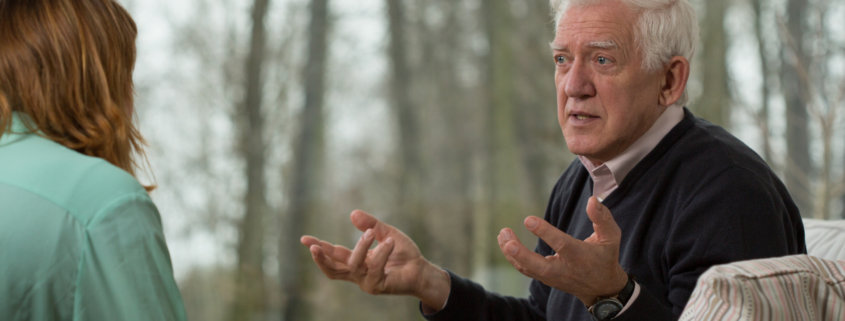
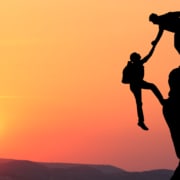
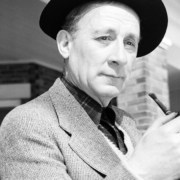 Public
Public